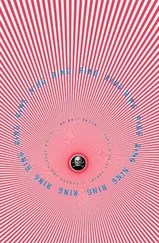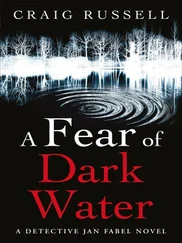Koji Suzuki - Dark Water
Здесь есть возможность читать онлайн «Koji Suzuki - Dark Water» — ознакомительный отрывок электронной книги совершенно бесплатно, а после прочтения отрывка купить полную версию. В некоторых случаях можно слушать аудио, скачать через торрент в формате fb2 и присутствует краткое содержание. Год выпуска: 2006, ISBN: 2006, Издательство: Vertical, Жанр: Ужасы и Мистика, на английском языке. Описание произведения, (предисловие) а так же отзывы посетителей доступны на портале библиотеки ЛибКат.
- Название:Dark Water
- Автор:
- Издательство:Vertical
- Жанр:
- Год:2006
- ISBN:9781932234220
- Рейтинг книги:3 / 5. Голосов: 1
-
Избранное:Добавить в избранное
- Отзывы:
-
Ваша оценка:
- 60
- 1
- 2
- 3
- 4
- 5
Dark Water: краткое содержание, описание и аннотация
Предлагаем к чтению аннотацию, описание, краткое содержание или предисловие (зависит от того, что написал сам автор книги «Dark Water»). Если вы не нашли необходимую информацию о книге — напишите в комментариях, мы постараемся отыскать её.
, which spawned the hit film and sequels. The first story in this collection has been adapted to film (
, Walter Salles), and another, “
” is currently in production with Dimension Films.
Naoki Prize Nominee (1996) Izumi Kyoka Prize Nominee (1996)
Dark Water — читать онлайн ознакомительный отрывок
Ниже представлен текст книги, разбитый по страницам. Система сохранения места последней прочитанной страницы, позволяет с удобством читать онлайн бесплатно книгу «Dark Water», без необходимости каждый раз заново искать на чём Вы остановились. Поставьте закладку, и сможете в любой момент перейти на страницу, на которой закончили чтение.
Интервал:
Закладка:
In the mirror he saw the stall doors to five toilets. The doors of the two stalls to the left and the two to the right were open. Only the door of the stall in the middle was closed. The doors were designed to remain closed only when a stall was occupied.
… In other words.
Kamiya turned around and took a long hard look at the closed stall door. It seemed inconceivable that anyone could be in there.
All the lights had been out when he’d reached this floor. The restroom had also been in complete darkness. Kamiya had had to turn the lights on.
He was torn as to what he should do next. He didn’t want to get involved in anything unusual. He’d already completed what he’d come here to do. He heard a voice telling him to return to his post on the double. All the while, his curiosity was becoming harder to resist. After all, inquisitiveness was a highly desirable quality in an actor. Wasn’t Kiyohara always telling them that?
Kamiya moved a little closer and gave the door a poke with the end of the mop handle.
The door refused to yield.
He then tried giving the door a push with his hand. But the door wasn’t stuck. It was locked from inside.
He was about to ask whether anyone was in, but thought better of it. It seemed such a silly question, and if someone actually replied, he’d die of shock.
Reining in his curiosity, Kamiya gradually backed away from the door. He told himself that it was high time to get back to the sound effects booth.
Every time he moved his feet, the hair that he’d pulled from the drainpipe got tangled on his heels. He hadn’t realized until now that the water flooding the restroom floor was forming a current. The water began to flow towards the closed stall door and into the space beyond.
The noise of a toilet being flushed came from the stall. As if drawn to the sound, the water covering the floor rushed into the stall, gurgling under the locked door.
Kamiya steadied himself, his frame now rigid from head to toe. Whoever it was inside the stall had just finished. Kamiya heard the metallic sound of the door being unlatched, and it began to open. Through the crack, he saw something black squirm — not just one, but innumerable black forms, squirming.
There was a tense hush. A sharp scream had brought Kamiya’s consciousness back to reality somewhat. He’d been so deeply immersed in his acting that he’d forgotten why the collective gaze of an audience was upon him. He’d been breathing the very atmosphere of his own performance.
4
Within a month after Kairin Maru ended its run of Watercolours — the troupe’s thirteenth production — all the reviews were in from the major theatre magazines. In general, they were favourable, but some critics complained that the play’s structure was simply too outre.
Let us quote some of the more important reviews.
From the November issue of Monthly Play Guide:
I’m still not quite sure how much of a conscious contrivance it was on the part of director Kenzo Kiyohara to incorporate the significance of that location. I have to admit being captivated by his unique technique of taking a device as the opening to a play. The subject of the play is no doubt water, although water could not have been the original concept. The director himself would probably agree that he had to bring water into play to take advantage of the building’s unique structure, famous in its day as the home of the disco Mephisto.
For all that, it is splendidly thought out. The action of the drama is played out on the third, fourth, and fifth floors of the building, with water flowing down from the upper floors to the lower, thereby providing a unifying vertical thread to the action. It must have taken a great deal of daring for the small theatrical company to handle such a large volume of water on the stage, especially in light of the ingenuity needed to drain it away successfully. Yet to take on such a seemingly unwelcome challenge as this is the hallmark of Kenzo Kiyohara.
The highlight of the piece was the performance of Kamiya, who fought a lone battle to bring under control a leak from the ceiling. In what amounted to a one-man show, his performance contained some very eerie moments. Still, one wonders why it had to be presented in the horror style. In this regard, the scene was rather puzzling …
From the October issue of Stage Gallery:
It is not a particularly new contrivance for actors to venture off the stage into the audience. Indeed, there are few, if any, independent companies that have not availed themselves of this device. Yet the device employed in this production by Kenzo Kiyohara is more complex. The disco known as Mephisto used to operate on three floors, each catering to clientele with different tastes. Each floor had its own turnstile for customers to gain admission through. Kiyohara has followed this system, staging different plays on each of the three floors — the third, fourth, and fifth. What serves to link each of these stages is the medium of water. Water will always fall downwards under the pull of gravity. Even in a concrete structure, water will find a way to leak down through the slightest crack. The effective use of water on its downward journey binds the three stages by a vertical link.
What makes Kiyohara the consummate businessman as well as showman is that he has priced the performance per floor.
Those who watch the third-floor performance whet their appetites for the fourth floor performance, which in turn spurs them to attend the fifth-floor performance. Thus, to grasp the significance of the man emerging from the flooded restroom, one must watch the play on the fifth floor. In this manner, members of the audience are enticed to visit the playhouse three nights in a row.
From the winter issue of the quarterly Performing Arts:
One stage was almost turned into a swimming pool, with water spurting and gushing in all directions. Draining it all away afterwards must have presented the company with great difficulties. Yet the whole experience was well worth the effort. I found the scene with the multicoloured hair undulating in the water quite overwhelming. Effective lighting techniques made the flesh tingle with the beauty and eeriness of it all.
The multicoloured hair symbolizes the girls who once danced there. Although the hair does indicate a transition to the group dancing scene, there can be no denying that the audience is provided with an insufficient explanation as to what is going on. The fourth floor performance alone is not enough to enlighten them. However, the splendid contrast between the quiet of water and the massive blasts of the dancing scene denies the very need for an explanation. If the intent of this staging is beauty tout court, this critic accepts that he has succumbed to the plan. All theorizing aside, I did find beauty in the morbidity of that world.
VII — FOREST UNDER THE SEA
Early winter, 1975
The soft soil underfoot had become hard bedrock before he knew it. Once out of the woods, he suddenly found himself atop a crag. With the rugged hardness of rock to reassure the soles of his feet, he made his way to the edge and peered over to find a sheer ledge dropping off no more than his own height. Here the woods abruptly ended, and below the drop extended a sloping strip of land covered by fallen leaves. Although there should have been something like a small stream winding its way down the eastern slopes of the mountain, no marsh was visible from this point onwards, nor was the sound of running water to be heard.
It felt like but a short while ago that the noonday sun, reflecting off the water, repeatedly caught the eye. Yet the stream vanished as if swallowed up by the earth.
Читать дальшеИнтервал:
Закладка:
Похожие книги на «Dark Water»
Представляем Вашему вниманию похожие книги на «Dark Water» списком для выбора. Мы отобрали схожую по названию и смыслу литературу в надежде предоставить читателям больше вариантов отыскать новые, интересные, ещё непрочитанные произведения.
Обсуждение, отзывы о книге «Dark Water» и просто собственные мнения читателей. Оставьте ваши комментарии, напишите, что Вы думаете о произведении, его смысле или главных героях. Укажите что конкретно понравилось, а что нет, и почему Вы так считаете.












